#fantômas: the dead man who killed
Photo


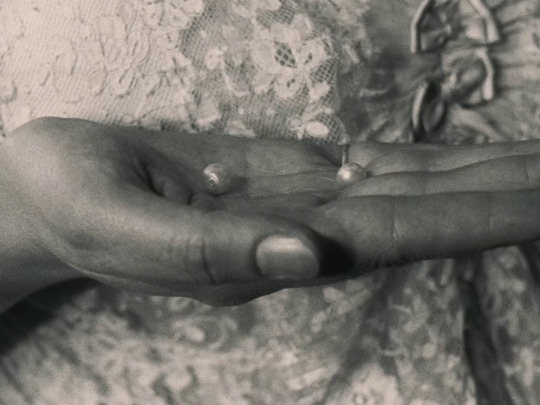

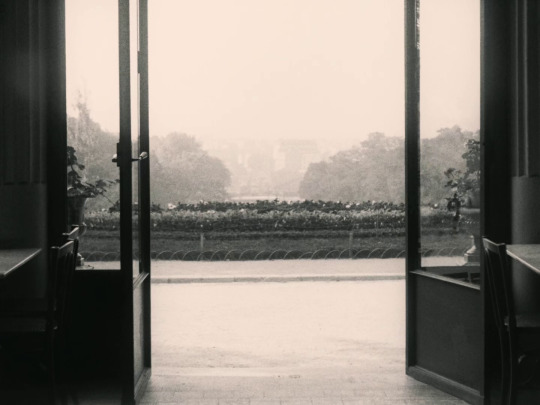
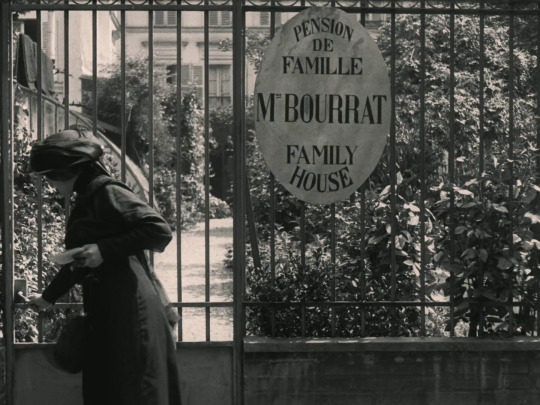
Fantômas III: Le mort qui tue (Louis Feuillade, 1913)
#fantômas: the dead man who killed#fantômas III: le mort qui tue#fantômas#louis feuillade#silent film#caps
243 notes
·
View notes
Text
Crime Syndicate Origins
Owlman, The World’s Deadliest Thief:
“My City, My Rules”
Thomas and Martha Wayne were a beacon of hope in a world that often felt like it was teetering on the brink of oblivion. Wayne Sr’s hardline anti-crime campaign bringing an end to the criminal syndicates and consortiums that had all but ruled Gotham since the days of the first Power Ring, offering an oasis of stability in an Amerika still plagued by the Power Ring’s former confederates in the World Crime Society.
With Thomas as its architect, Gotham became a symbol of a world free from the yolk of supercrime but it was Martha’s humanitarian efforts in the wake of the First Markovian Oil Crisis that truly made the Waynes beloved. It would have been all too easy for her to remain within the neigh-impenetrable city-state her husband had crafted, instead, she chose to venture out into the world motivated by nothing more than a desire to help others.
Amidst greed and corruption, Martha Wayne stood out as a true hero, continuing to direct relief efforts even as she entered the third trimester of her first pregnancy, giving birth to her first son shortly after her return to Gotham. A second child following less than four years later completing what many considered the picture of Amerikan nuclear bliss.
Christened ‘The Dynamic Duo’ by the press, Bruce and Thomas Jr. were inseparable from a young age, spending hours exploring the cave systems that ran beneath stately Wayne Manor while crafting elaborate tales of secret sects and sinister cults heavily influenced by the lurid pulp novellas supplied to them by the family’s dotting butler Cuthbert Pennyworth.
Unfortunately, the two’s taste in fiction would lead to tragedy when Bruce and Thomas Jr. convinced their parents to take them to a midnight screening of The Mask of Fantômas in celebration of Bruce’s eighth birthday. Leaving the Gotham Midnight Theater, the family were held-up halfway along Park Row by Joe Chill, a man who would later be called “The Last Criminal in Gotham.”
Unwilling to hand over his wallet let alone his wife’s jewellery for fear of the damage it would do to his image, Thomas Sr. attempted to apprehend the mugger. Already on edge, Chill opened fire on the family, killing Bruce and Martha instantly and sending Thomas Jr. into a coma that lasted nearly ten days.
The deaths of Martha and Bruce, as well as Thomas Sr’s perceived role in them, formed a gulf between the two surviving Waynes, one which only increased as Thomas Jr. grew older. Publically flaunting petty criminal behaviour, the younger Wayne all but cut off contact with his father, spending most of his time in the company of Cuthbert who had increasingly come to view the boy as something of a kindred spirit. Revealing the death of his own brother and a history of criminal behaviour in a moment of drunken sincerity, Cuthbert’s tutelage in a range of petty crimes would serve as Thomas’ first steps in his journey towards super crime.
At age 13, he was placed in a boarding school, his father no longer willing, or able, to deal with the boy’s behaviour. A scant six months later he would vanish, provoking a citywide manhunt that ended in him being declared a missing person, marking the start Thomas Sr’s increasingly draconian approach to criminal justice within Gotham City. Forced out of an already vestigial position within Wayne Enterprise’s, Wayne would dedicate all his energy to maintaining a zero-tolerance policy on all crime within the city even as he burned through what little goodwill the family name had left.
The sudden return of Thomas Wayne Jr. ten years later was treated by many as a second coming for a city that had once again fallen into a despair all too common in the world, his meteoric takeover the Wayne Enterprise’s seeing the company rededicate itself to charitable endeavours with a zeal that hadn’t been seen since Martha’s death. With the widespread refurbishment of many of the city’s poorest areas, the expansion of Wayne Towers in the heart of Gotham and the conversion of the now-abandoned Wayne Manor into The Bruce Wayne Memorial Orphanage, Thomas Wayne Jr. was viewed as a return to the behaviours of old, his open criticism of his father’s actions only further endearing him to a city desperately in need of a hero.
Unfortunately, that wasn’t what it got.
Within three months of his return, the city was plagued by a series of brazen, ultraviolent crimes staged by an unknown figure seemingly striking at random and operating with an almost supernatural knowledge of the city. Owlman would reveal himself to the public in a shocking daylight assault on GCPD headquarters that left 15 officers dead and nearly a decade of impounded weapons and drugs stolen, an already damning failure on Wayne Sr’s part that was rendered worse by his public refusal of Wayne Enterprises offer to refurbish the gutted GCPD building.
The Owlman’s arrival would serve as a clarion cry for Gotham’s slumbering criminal element, with the covert aid of Owlman criminal organisations old and new established themselves with a vigour best exemplified by Big Jim Gordon, a discharged Chicago PD officer drawn to Gotham by the promise of easy money who quickly became a key power player in the New Gotham Underworld, acting as a direct go-between for Owlman and the various organisations established in his wake.
That Gotham’s favourite son and the archfiend of its nightmares are one and the same is known to only two people. The ever-faithful Cuthbert and Thomas Sr., both perfectly aware of Owlman’s origin in a game shared between Bruce and Thomas as children. Drawn into an increasingly violent Cold War, the animosity shared between father and son promises to change the face of Gotham City forever.
Something a bit different, wee Crime Syndicate fact-fic dealing with mad wee bastard Owlman.
30 notes
·
View notes
Photo
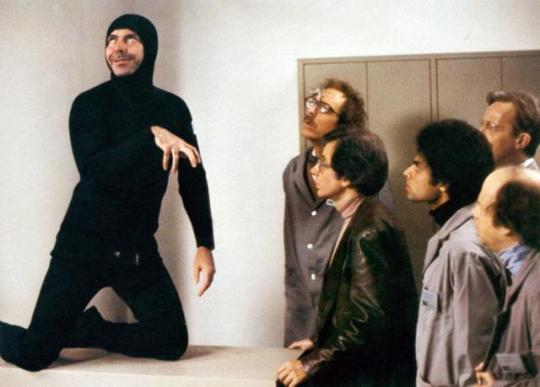
THE FUTURIST!’s Movie Viewing Log circa JUNE 2019
_______________________________________________________
LONDON HAS FALLEN (2016, Babak Najafi)
FANTÔMAS II: JUVE VS. FANTÔMAS (1913, Louis Feuillade)
ROCKETMAN (2019, Dexter Fletcher)
KING GEORGES (2015, Erika Frankel) * documentary
THE LONGEST DAY (1962, Ken Annakin / Andrew Marton / Bernhard Wicki)
FANTÔMAS III: THE MURDEROUS CORPSE (1913, Louis Feuillade)
DRAGGED ACROSS CONCRETE (2018, S. Craig Zahler)
THE MANHATTAN PROJECT (1986, Marshall Brickman)
DARK PHOENIX (2019, Simon Kinberg)
SIMON (1980, Marshall Brickman)
THE HAPPY PRINCE (2018, Rupert Everett)
THE DEAD DON’T DIE (2019, Jim Jarmusch)
THE MAN WHO KILLED HITLER AND THEN THE BIG FOOT (2018, Robert D. Krzykowski)
FANTÔMAS IV: FANTÔMAS VS. FANTÔMAS (1914, Louis Feuillade)
LOVESICK (1983, Marshall Brickman)
LATE NIGHT (2019, Nisha Ganatra)
MODEL SHOP (1969, Jacques Demy)
UNDER THE SILVER LAKE (2018, David Robert Mitchell)
FANTÔMAS V: THE FALSE MAGISTRATE (1914, Louis Feuillade)
BACON GRABBERS (1929, Louis R. Foster) * short
TOY STORY 4 (2019, Josh Cooley)
THE MOON-SPINNERS (1964, James Neilson)
CHILD’S PLAY (2019, Lars Klevberg)
FLUTTERING HEARTS (1927, James Parrott) * short
LES VAMPIRES EPISODE I: THE SEVERED HEAD (1915, Louis Feuillade)
CABARET (1972, Bob Fosse)
THE UNDEFEATED (1969, Andrew V. McLaglen)
MOONRAKER (1979, Lewis Gilbert)
1 note
·
View note
Text

Carole’s rec-list :
To start this new event, I will try to share with you some of my favourite French movies…
I cannot give you a list that will give you all the French that you should watch… even for me, who has not a thorough knowledge of French cinema, there would be way too many. But I can try to give you my favourites, and to find a balance between 'classics' and 'just the ones I love'. As you may have noticed, I LOVE cinema, so I will undoubtedly get carried away…
And as I cannot give you as much recs as I would like, I will first give you the names of a few directors that have shaped French cinema and that you should definitely check out, even if I won't recommend movies from all of them here, so if you want more French movies, you can check out their work :
- Jean-Luc Godard
- Jacques Tati
- François Truffaut
- Claude Lelouche
- Jacques Audiard
- Jean-Pierre Melville
- Jean Renoir
- Claude Chabrol
- Jacques Demy
Also, I can't recommend movies with all the actors I like, so here are a few names you should check out if you're interested in more French movies (obviously, the list isn't exhaustive, but I like these actors a lot :) ) :
- Guillaume Canet
- Lambert Wilson
- Albert Dupontel
- François Cluzet
- Mélanie Laurent
- Audrey Tautou
- Marion Cotillard
- Alain Delon
- Jean-Paul Belmondo
- Jean Gabin
- Catherine Deneuve
Alright, now, let's get to business! There's a bit of everything here, I have tried to put a bit of funny and sad movies to keep a balance and all can find something they like. There's no particular order.
Les Demoiselles de Rochefort
1962 - Directed by Jacques Demy, starring Catherine Deneuve, Gene Kelly, Françoise Dorléac, Jacques Perrin, George Chakiris, Danielle Darrieux

Sum-up : For a few days, we follow the life of two twins sisters, living in the small town of Rochefort, who are both looking for love and to escape this tiny town to try to build a career as musician and dancer in Paris. During these few days, the town is shaken by two events : a murder and the arrival of a fair. Characters will walk through the town, and pass by each other, but will the two young women meet the right person?
Carole's critique : This is undoubtedly my favourite French movie of all time, along with my favourite musical movie. After LoTR, it is undoubtedly my favourite movie as well. It's happy, full of colours and characters that you can't help but love. The music, composed by Michel LeGrand, is amazing, and will make you want to dance through your home. The aesthetic of the movie is very representative of the 60's in France and its cinematography at the time: full of colours.
There aren't much musical movies in France, but Jacques Demy shaped the whole genre and gives, with this movie the best French musical movie you will find out there.
YOU MUST SEE IT!
If you like this movie, you should also watch : Les Parapluies de Cherbourg, Peau d'Âne.
Astérix et Obélix: Mission Cléopâtre
2002 - Directed by Alain Chabat, starring Gérard Depardieu, Christian Clavier, Gérard Darmon, Jamel Debouze, Alain Chabat and Monica Bellucci

Sum-up: During Roman control, a single village resists to the military invasion of the powerful Caesar. Their secret: a magical potion brewed by their druid that gives them an extraordinary strength. When an old Egyptian friend needs help to build Cleopatra the most amazing palace, and knowing that he will be killed if he fails, a group of Gallic travels all the way to Egypt to give him a hand and save his project.
Carole's critique : Astérix and Obélix are very popular comic characters in France. Most of us have grown up reading the comic books as a child. There have been many adaptations on screen of the adventures of the two heroes, but this one is probably the most famous and the best. Directed by Alain Chabat, who started with a little group of friends as a comedy actor, he is known for his crazy but hilarious movies. And with this one, he doesn't disappoint us. It's completely mad, it's goofy and full of mad moments, but it is 100% hilarious. My entire generation knows this movie, and some scenes are now extremely famous. If you want to discover French crazy humour, watch this, you will spend a lovely time.
If you like this movie, you should also watch : La Cité de La peur, Astérix et Obélix aux Jeux Olympiques, Rrrrrr
Bienvenue Chez Les Ch'tis
2008 - Directed by Dany Boon, staring Danny Boon, Kad Merad.
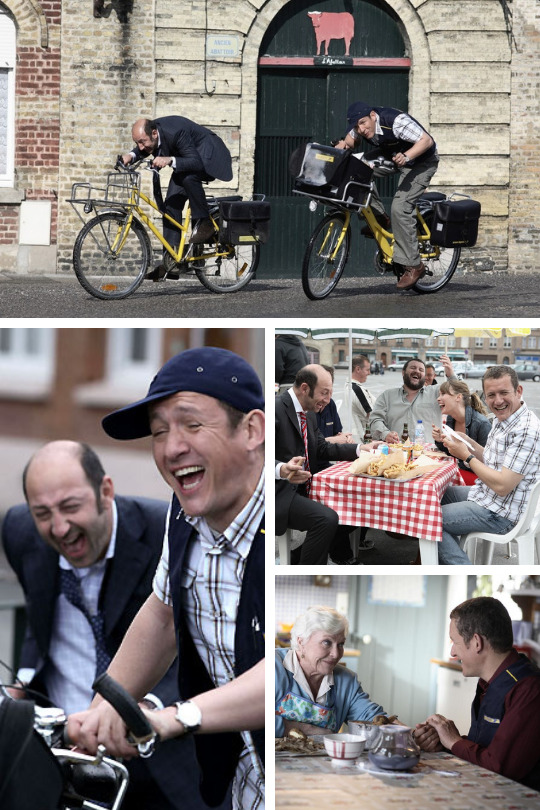
Sum-up: A postman is transferred from the sunny south of France to the cold north of the country after trying to cheat to be transferred in the town his wife longed to live in. At his arrival in the new town, he has to adapt to the strange accent of his colleagues, along with their food and other habits.
Carole's critique : One of the funniest French movies here again, this film had a HUGE success here, pushing the actors of the movie to the rank of stars in the country. Dealing with the clichés told about the northern part of France (shaped by a lot of mining in the past century, it is often seen as one the poorest part of the country), Dany Boon signs a tender movie about his home. It's hilarious, it's tender, it's happy and will make you feel a bit dizzy. I just hope that the translations will be enough to carry the wordplays used in the movie, as most of the humour relies on that. Anyway, you should definitely watch it.
If you like this movie, you should also watch: Intouchables, Rien à declarer, Un peu, beaucoup, aveuglément
Intouchables
2012 - Directed by Eric Toledano, starring François Cluzet, Omar Sy
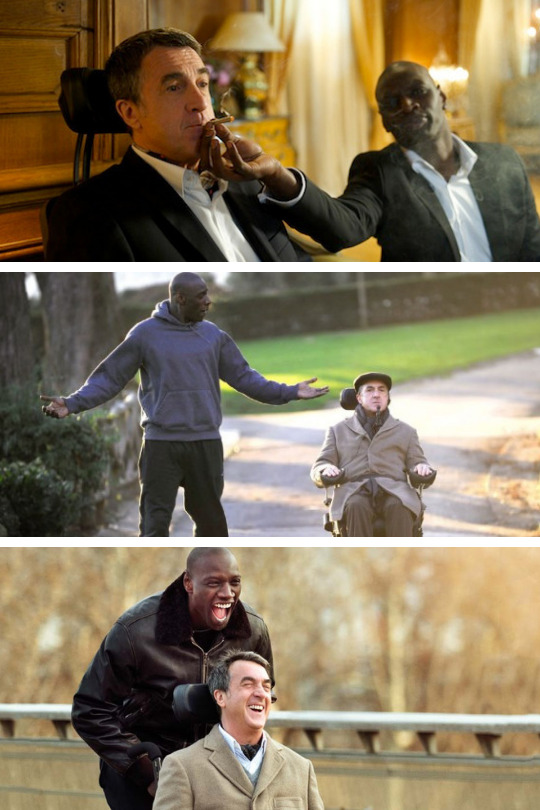
Sum-up: After an accident, a wealthy man is paralyzed and needs constant help to get through his day. Looking for someone to help him, he encounters a strange man from the poorest part of town, looking for a job. On impulse, this wealthy man decides to hire him. The two men will soon become close friends, and change each other's life.
Carole's critique: I'm staying on funny movies, because, despite what the sum-up might let you think, this a comedy. Here again, huge success in France (I've also heard of an American reboot in preparation, but what is the point in watching a reboot when you can watch the original thing?). Actors are perfect and dosing perfectly the balance between humour and serious topics treated in this movie, from disability, poverty, racism and life in general. A beautiful movie, spiced with hilarious scenes.
If you like this movie, you should also watch : Bienvenue Chez Les Ch'tis
La Grande Vadrouille
1966 - Directed by Gérard Oury, starring Louis de Funès, Bourvil

Sum-up: While the country is under German occupation during the Second World War, a group of English soldiers are parachuted in Paris. But they are attacked during the operation, resulting in the scattering of the English soldiers throughout town. A French painter and a French conductor at the opera rescue two of the soldiers, and try to help them escape the German army.
Carole's critique : Here again, a comedy. This is one of the most beloved and famous French movies. Iconic actors De Funès and Bourvil share the screen to result in hilarious scenes that are now extremely famous. It's funny, it deals with the war but do not fear, you will not see anything shocking. The characters are loveable and utterly ridiculous and you will laugh a lot with this movie.
If you like this movie, you should watch : Le Corniaud, La 7ème Compagnie, Le Gendarme de Saint-Tropez
Les Tontons Flingueurs
1963 – Directed by Georges Lautner, starring Lino Ventura, Jean Lefebvre, Bernard Blier, Francis Blanche

Sum-up : An ancient mafia member has to take over the business of his oldest friend after he dies. But many envy the business of the dead man, and try to take away the control of the whole mafia.
Carole's critique : A classic. Everyone has watched, or at least heard about this movie. Clearly a parody of American movies, the movie is a very funny comedy. The last of three independent movies adapted from the same series of books, this movie has become over the years one of the most famous French films. And the actors will always be remembered mostly for their role in this masterpiece.
If you like this movie, you should watch : Touchez pas au grisbi, Le cave se rebiffe (the first two movies of the trilogie, even if the three movies are completely independent from one another), l'Aventure c'est l'aventure.
Mais où est donc passée la septième compagnie?
1973 - Directed by Robert Lamoureux, starring Pierre Mondy, Jean Lefebvre, Aldo Maccione, Erik Colin
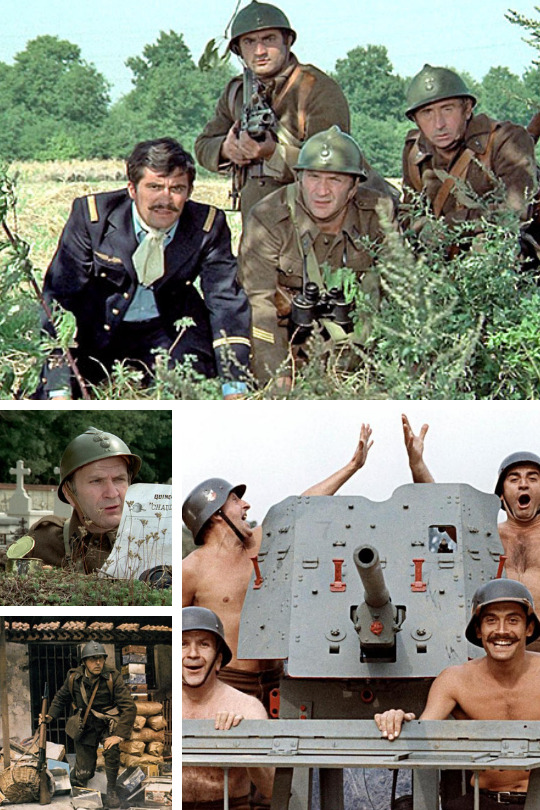
Sum-up: During the Second World War, a group of soldiers is captured by the German troupes, at the exception of three soldiers, who were sent ahead as scouts, and escape the capture. Trying to run away from the German forces, they encounter a French pilot, whose plane has been shot down. Together, they try to establish communication with their hierarchy and hide from the German army.
Carole's critique : This is the first movie of a trilogy, undoubtedly the best movie of the series of movies, btw. In the same spirit as La Grande Vadrouille, the movie is hilarious, despite the theme and time where the story takes place. I used to watch these movies a lot as a kid.
If you like this movie, you should watch : On a retrouvé la septième companie (the second movie of the trilogy), La Grande Vadrouille, Le Grand Blond avec une chaussure noire, La Chèvre.
Fantômas
1964 – Directed by André Hunebelle, starring Jean Marais, Louis de Funès, Mylène Demongeot

Sum-up : A famous burglar steals a series of precious jewels. In order to catch the criminal, a police officer and a journalist try to build a trap, but they will soon find out that Fantômas is more dangerous than what they thought.
Carole's critique : This is the first movie of a trilogy, inspired by a series of French novels. This is also my mother's favourite film, so I had to put it here. Once again, the movie is funny (yes, I like funny French movies, as you may have noticed). I also adore Jean Marais, who plays two different roles in this (Fantômas and the journalist). It's funny, and there's adventure, and I love this movie, that is all.
If you like this movie, you should watch : Fantômas se déchaîne, Fantômas contre Scotland Yard (the rest of the trilogy), le Corniaud, Arsène Lupin
L'Arnacoeur
2010 – Directed by Pascal Chaumeil, starring Romain Duris, Vanessa Paradis, François Damiens, Julie Ferrier

Sum-up : A man runs a surprising business : he is a professional 'couple breaker'. People can call him, and ask him to cause the break-up of a friend's or family member's couple. Everything was fine, until he was sent to this special mission, and falls for the woman he is supposed to convince to stop before she can get married.
Carole's critique : My personal favourite French romantic comedy. Because it's hilarious, and tender, and just sweet. If you want something funny and cute, watch this!
If you like this movie, you should watch : Jules et Jim, Paris-Manhattan, Un bonheur n'arrive jamais seul, Un peu, beaucoup, aveuglément, Jeux d'enfants
Un peu, beaucoup, aveuglément
2015 – Directed by Clovis Cornillac, starring Clovis Cornillac, Mélanie Bernier, Lilou Fogli, Philippe Dequesne

Sum-up : A puzzles creator tries to get rid of his new neighbour, a pianist. Indeed, the wall between their two flats is so thin, they can hear everything happening in the other's apartment, and he can't focus when she plays. Failing at convincing her to leave, they try to find a way to live as neighbours despite this very thin wall.
Carole critique : Is this movie a classic? No. Is this the best movie ever? No. But hell, I love it. Because the characters are completely mad and I love them. The story is tender and soft and funny and just cute. A romantic comedy just the way I love them. I advise it if you need something to raise your spirit.
If you like this movie, you should watch : La Délicatesse, Le Fabuleux destin d'Amélie Poulain, l'Arnacoeur, Paris-Manhattan.
La Belle et La Bête
1946 – Directed by Jean Cocteau, starring Jean Marais, Josette Day

Sum-up : An adaptation of the famous tale Beauty and The Beast.
Carole's critique: If Cocteau is very famous for his poetry and art, many tend to forget that he was also a film director, pouring poetry all over his projects. This is an old movie, so obviously the special effects are old, but the movie masters such a strange atmosphere and poetry, that it really doesn't matter at all. Jean Marais and Josette Day are outstanding, and the movie is basically the only adaptation of the tale that is worth being watched.
If you like this, you should also watch : Le Fabuleux destin D'Amélie Poulain, Au revoir là-haut, L'Ecume des jours
Le fabuleux destin d'Amélie Poulain
2001 – Directed by Jean-Pierre Jeunet, starring Audrey Tautou, Mathieu Kassovitz

Sum-up : We follow the life of a dreamer, Amélie Poulain, through her very peculiar world.
Carole's critique : The movie was and kind of still is an alien. The atmosphere is strange, and the movie is strange too, but full of a weird poetry as well. And when you stop watching it, you feel a bit dizzy, like the world around you isn't so real anymore.
If you like this movie, you should watch : L'écume des jours, La délicatesse
Au Revoir Là-Haut
2017 – Directed by Albert Dupontel, starring Albert Dupontel, Laurent Laffite, Nahuel Pérez Biscayart
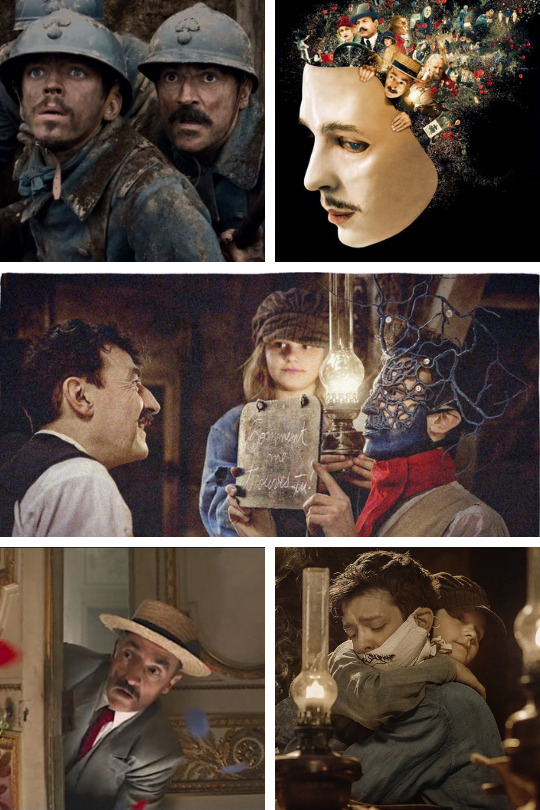
Sum-up : After the First World War, two former soldiers decide to organize a fraud using the artistic talents of one of them to create fake war memorials.
Carole's critique : The topic of the movie is obviously not happy. But the movie is surprisingly poetic and tender, dealing with the aftermath of war and terrible injuries in a delicate manner. The atmosphere is poetic, sometimes barely real, owning the film and its strange aesthetic a soft side. Yes, you will probably cry a little bit, but the feeling that this movie leaves is not as sad as it is tender. The best movie about the conflict and its consequences I've watched so far.
If you like this movie, you should watch: Joyeux Noël, La Traversée de Paris, L'Ecume des jours
Le Samouraï
1967 – Directed by Jean-Pierre Melville, starring Alain Delon, François Périer, Natalie Delon, Cathy Rosier

Sum-up : An assassin kills his target, but it might be more difficult than planned to get out of it alive and free.
Carole's critique : A dark thriller that is undoubtedly one of Delon's best roles. Alain Delon is one of these icons of French cinema, and he is the best in the genre 'films noirs', that defies these dark thrillers that exploded in the 50s and 60s in France. It's one movie of a dark series of films that bloomed around that time in France. And it's a good one!
If you like this movie, you should watch : Le Guépard, La piscine, Le Clan des Siciliens, Plein soleil, Borsalino, Peur sur la ville
L'Armée Des Ombres
1969 – Directed by Jean-Pierre Melville, starring Lino Ventura, Simone Signoret, Paul Meurisse, Jean-Pierre Cassel

Sum-up : A little group of people try to resist under the Occupation during World War II. But the Gestapo is closing on them.
Carole's critique : It's dark, but it's great! Depicting the resistance under the occupation with a vivid fear of getting caught, this movie is not a happy one. If you are interested in the topic, it's a brilliant movie to watch, but be careful, it's a dark one.
If you like this movie, you should watch : La traversée de Paris, Au revoir là-haut
Quai des brumes
1938 – Directed by Marcel Carné, starring Jean Gabin, Michèle Morgan, Michel Simon, Pierre Brasseur

Sum-up : An army deserter meets a strange girl who is terrified by her godfather. To defend her, he will have many perils to overcome, and the price to pay may be higher than expected.
Carole's critique : A classic. The scenario, written by Jacques Prévert as an adaptation of the novel of the same name, gives a poetic touch to this 'film noir'. And well, it's a masterpiece, what else can I say, it's just a classic. It's also the movie that revealed both Gabin and Morgan, some of the best French actors.
Le Capitan
1960 – Directed by André Hunebelle, starring Jean Marais, Bourvil, Elsa Martinelli

Sum-up : A man tries to protect the interests of the King against powerful men who are scheming against him.
Carole's critique : I used to watch this movie a lot when I was a child. It's a good example of the genre 'Cape et d'épée', that boomed in the 50's and 60's in France. And to me, it's just a lot of memories from my childhood, so I had to put it on the list.
If you like this movie, you should watch : Le Bossu, Le masque de fer, Le capitaine Fracasse, Cartouche, Cyrano de Bergerac, Fanfan la tulipe.
Le cinquième élément
1997 – Directed by Luc Besson, starring Bruce Willis, Gary Oldman, Milla Jovovich

Sum-up : To save the universe, the five elements must be brought together. But on the side of evil, many people try to capture in the fifth element, a perfect being.
Carole's critique : I mean, this movie is brilliant. It's completely crazy, but undoubtedly one of my favourite Sci-Fi movies! I know it's pretty famous worldwide, but if you haven't watched this, you must see this movie! Gary Oldman's performance is extraordinary, let's be honest.
If you like this movie, you should watch : Léon
Proposed by anon :
Les choristes
Directed by Christophe Barratier, starring Gérard Jugnot, François Berléand, Jean-Baptiste Maunier, Kad Merad

A new member of the team in a boarding school in 1949 introduces music and singing in the school. This will help the lives of the children there, even through hard times.
28 notes
·
View notes
Text
Mike Patton interview: DILLINGER ESCAPE PLAN INTERVIEW MIKE PATTON
https://www.revolvermag.com/music/real-things-dillinger-escape-plan-interview-mike-patton
June 5, 2010
"You know me," says avant-metal cult hero Mike Patton (see Faith No More, Mr. Bungle, Fantômas, Tomahawk, among a million other projects) at the prospect of being interviewed by Dillinger Escape Plan vocalist Greg Puciato and guitarist Ben Weinman. "It's gonna deteriorate into fart jokes." And indeed the conversation does, but not before winding through more fascinating topics. Perhaps what becomes most apparent from the powwow — which was scheduled with much difficulty amid Patton's Faith No More reunion touring and DEP's roadwork behind fourth album, Option Paralysis — is the camaraderie and mutual respect between these former tourmates and occasional collaborators.
That respect started early for the Dillinger guys. Weinman recalls staying home sick from school and poking out Patton-era Faith No More songs on his shitty Casio; and the same band made a 9-year old Puciato understand metal's unlikeliest possibilities. "I'll tell you this. Probably the gayest thing I did was shave the sides of my hair," says Weinman, referencing Patton's signature early- '90s cut. "Then as soon as I did that, Mike got a fucking eyebrow ring. That was one step away from a bellybutton ring. I didn't go there." Patton comments with his usual deadpan, "Thanks for paying attention to my hair, Ben."
It's obvious that Dillinger have paid attention to much more than just Patton's once-flowing locks. They certainly adore Patton's steadfast abidance to his own musical whims — currently displayed on the gorgeous Mondo Cane, an album that teams his flawless pipes with a 40-piece orchestra and a shimmering selection of Italian pop. Dillinger's Option Paralysis is maybe the next level to Patton's math-fucked '90s freakcore, borrowing a little of Faith No More's itchy-sensitive croon, aggressively updating Mr. Bungle's time-signature torture and certainly expanding upon the band's 2002 four-song collab with Patton, Irony Is a Dead Scene. "I always think back to [FNM's 1992 album] Angel Dust," says Weinman. "Faith No More made a conscious effort to not be pinned down to a style: 'Nobody's gonna be able to tell us what we sound like.'"
Interjects Puciatio, "The one thing about angel dust is that it gets you really fucking high."
Says Patton, "Now that's a better answer!"
MIKE AND GREG, YOU BOTH REPLACED THE ORIGINAL SINGERS IN FAITH NO MORE AND DILLINGER, RESPECTIVELY. WAS IT HARD COMING IN AS "THE NEW GUY"?
Patton When you come into a pre-existing situation, you gotta have your own thing going. You gotta be really strong about it and you gotta look at the older material in an aggressive way — "I'm gonna make this mine somehow." You need to put your imprint on the situation that you're in. And that was my viewpoint and I'm sure Greg did the same. Obviously it's worked.
Puciato You have to have a combination of wanting to do your own thing with a reverence for what has already been done. It's hard to make something feel like it's yours. Especially with lyrics — you know lyrics aren't lyrics you wrote, you don't necessarily know exactly what they mean. But 10 years in, I've played them so many times that I don't remember that they were ever not with me.
STAGE PERFORMANCE IS A CHAOTIC, HIGH-RISK AFFAIR FOR ALL OF YOU. WHAT'S THE LAST TIME YOU WERE HURT ONSTAGE?
Puciato A few weeks ago, man. I got hit in the eye with Ben's guitar. It opened up and I closed it with Super Glue, which is the most mind-blowing invention of all time. You can pretty much heal any cut on your body with Super Glue. You never need to get stitches. About three days later he hit me in the exact same spot and opened up that cut plus a different one. After the show kids are like, "That was fucking awesome!" It's not that awesome. They think it's awesome that I don't stop playing. To me that's normal. I think that it would be ridiculous to stop playing. I'm already hurt!
Patton That brings up a question I've always wanted to ask you guys: Do you have band medical insurance?
Weinman We don't. Greg doesn't have medical insurance at all. Which is just a problem. As a fatherly guy, it's just insane to me.
Puciato I haven't had medical insurance since I've been in Dillinger. I know that sounds really stupid, but I'm pretty sure I'll get it soon. I've never been seriously hurt, I don't ever get sick really, I don't have any serious medical problem. For the last nine years, nothing's happened, thankfully. And I know I've saved maybe 13 thousand dollars in insurance premiums. But I just turned 30, so maybe I should get insurance.
Patton Well, when you get to be my age …
Weinman Not only do you feel those things, but nothing ever heals. I broke my neck onstage. Straight up. I shouldn't even be walking. I broke my neck. I tore my rotator cuff
Patton Me, too! Rotator cuff. That's my new thing. I've been going to rehab. I got it in both shoulders, which is the worst thing.
Weinman I tore it all the way around. There was only two pieces of tissue holding my shoulder into the socket.
Patton Oh god!
Weinman So I literally had to have it sutured back together. And it ruined me for six months.
Patton I remember hearing stories that you were in a body cast. You know how news travels. I've had at least a couple botched surgeries. They've been no fun.
Weinman Obviously the breast reduction was the worst one you had.
Patton And the ball-wrinkle removal. No wonder I look so young!
DO YOU REGRET ANYTHING YOU'VE DONE ONSTAGE?
Patton Eesh. You guys start, please.
Puciato I guess I did that thing where I shit onstage in England [at the 2002 Reading festival]. But you can't be mad at yourself for something you wanted to do at the time. I never want to get to a point where I'm second-guessing myself onstage. If the time ever comes where I go to do something and my rationale stops me midway through, that would destroy the entire point of performing. So, there's nothing I ever regretted, but there are things that I don't understand what my mindset was back then. Like the whole shitting at Reading. I would not do that now. Fuck, man, I don't know if I would want to see someone shit.
Weinman I can say this: I never saw Faith No More until, like, a week ago.
Patton Is that true?
Weinman That's absolutely true. I never saw Faith No More and that's honestly why I was so choked up at the show. Until YouTube came out, I didn't know that Mike was such a crazy frontman. All the Dillinger antics were just influenced by me hating people. I heard things about the punk scene, but there was none of it happening. We were seeing these old guys who probably saw Minor Threat and were so bored; a shitty, Xeroxed-a-thousand-times copy of it. So I started throwing my guitar across the room. I would literally have to go to a guitar store and buy the cheapest guitar with stickers all over it to play my next show. So later when I actually heard about Mike having stage presence, it just tied it all together. It made me feel more an affinity to them.
Patton To me, the stage is like the free zone. That's what makes it exhilarating. For whatever reason there's this weird little square where it's kind of a romper room for adults. So I've done some things. Some of them are good and some of them are not so good. But none of them are planned. You don't think, "Hey, I'm gonna stage dive tonight." Or, "I'm gonna rape a bouncer tonight."
Weinman I couldn't agree with that more — aside from the fact that I actually do regret certain things.
Patton Oh, me too! Oh God, are you kidding me?
Weinman I legally can't talk about some of it.
Patton I'm not talking about hardly any of it, OK? When you reach out with a microphone and fully punch some kid in the head — and realize he's the wrong kid? Shit like that. I'm not saying that happened, of course.
Puciato Yeah, I used to think that you could do whatever you want onstage and not be held accountable — and about 20 lawsuits later I learned that's not true. You can get carried away and think this pirate-ship mentality where you come to town, rape, pillage, fuck as much shit up as possible, and then you leave without any repercussion. But we're in a different time. You can find out six months later that something you did at a show you don't even remember anymore, someone is trying to sue you.
Weinman We were playing a show, more people than I ever expected, shortly after we released Irony Is a Dead Scene with Mike on it. So there was a lot of kids coming to see us that didn't normally know Dillinger. Mike Patton fans. So some of them weren't used to our very … interactive experience.
Patton Interactive experience!
Weinman I remember being extremely pumped by the attention and at the end of the show I decided to throw my guitar across the room, as hard as I can in attempt to make it explode on the back bar wall. Which was a little farther away then I thought.
Patton Uggggh …
Weinman And I literally almost killed a girl. Now for 99 percent of that crowd it was probably the most amazing thing they ever seen. And I'll tell you, they'll never see a band in 3-D — no matter how many times they see Avatar.
Patton There has to be an element of danger, or at least an element of intrigue for a band to be interesting.
Weinman But I really debated what my purpose in life was after that. This is what it's about? This girl that got severely hurt? I really had to think — and I don't like thinking.
Patton Yeah ...
Weinman The two guy friends that were with her wanted to kick the shit out of me. She was so scared. She ended up being OK, but it was very traumatic. I remember talking to this girl while she was on the floor. Saying, "Is there anything I can do? Is there anything I can do?" And the one thing that she said to me? "Can you introduce me to Mike Patton?"
Patton Ha! Fuck you!
Weinman I swear to God.
Patton Ah, you're killing me. You're killing me. Still, you could have done that same thing and hit a dude who would have gone, "I'm gonna tattoo this scar on my forehead!"
Weinman And that's happened 1,000 times since. But that's an interesting story. So thanks, dickhead.
Patton Yeah … my fault, as usual.
Weinman No, but that also was a great thing because it showed how amazing it is that you've touched so many people.
Patton No, no, no … I didn't touch anybody! You touched her.
SO WAIT, DID YOU END UP INTRODUCING HER TO MIKE PATTON?
Weinman No. She sued me actually.
Patton These things happen because we want there to be action at our shows. Sometimes when you look out there and see a sea of heads it kind of gets you. And you feel the need to stir the soup a little bit. When I'm out there, just singing with a microphone and have a chance to look? Things happen.
8 notes
·
View notes
Photo
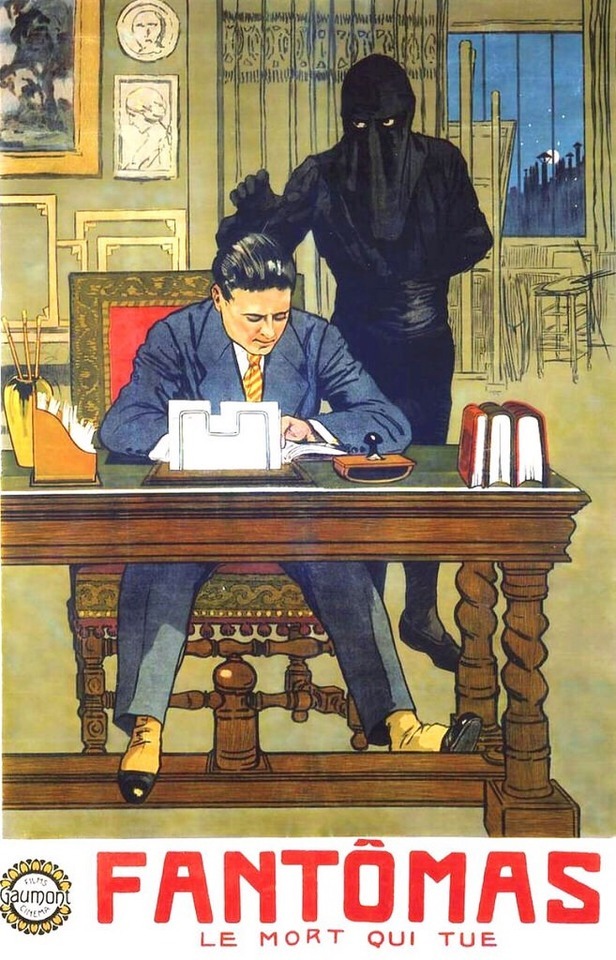
The dead man who killed... Poster for Fantômas: Le mort qui tue (1913), a French crime thriller starring René Navarre.
1K notes
·
View notes
Text
Crime and Gangster Films
Film title in essay
C RIME & G ANGSTER
F ILMS
Part 1
Crime and Gangster Films are developed around the sinister actions of criminals or gangsters, particularly bankrobbers, underworld figures, or ruthless hoodlums who operate outside the law, stealing and violently murdering their way through life. In the 1940s, a new type of crime thriller emerged, more dark and cynical - see the section on film-noir for further examples of crime films. Criminal and gangster films are often categorized as post-war film noir or detective-mystery films - because of underlying similarities between these cinematic forms. Crime films encompass or cross over many levels, and may include at least these different types of films: the gangster film, the detective (or who-dun-it) film, the crime comedy, the suspense-thriller, and the police (procedural) film.
Crime stories in this genre often highlight the life of a crime figure or a crime's victim(s). Or they glorify the rise and fall of a particular criminal(s), gang, bank robber, murderer or lawbreakers in personal power struggles or conflict with law and order figures, an underling or competitive colleague, or a rival gang. Headline-grabbing situations, real-life gangsters, or crime reports have often been used in crime films. Gangster/crime films are usually set in large, crowded cities, to provide a view of the secret world of the criminal: dark nightclubs or streets with lurid neon signs, fast cars, piles of cash, sleazy bars, contraband, seedy living quarters or rooming houses. Exotic locales for crimes often add an element of adventure and wealth. Writers dreamed up appropriate gangland jargon for the tales, such as "tommy guns" or "molls."
Film gangsters are usually materialistic, street-smart, immoral, meglo-maniacal, and self-destructive. Rivalry with other criminals in gangster warfare is often a significant plot characteristic. Crime plots also include questions such as how the criminal will be apprehended by police, private eyes, special agents or lawful authorities, or mysteries such as who stole the valued object. They rise to power with a tough cruel facade while showing an ambitious desire for success and recognition, but underneath they can express sensitivity and gentleness.
Gangster films are often morality tales: Horatio Alger or 'pursuit of the American Dream' success stories turned upside down in which criminals live in an inverted dream world of success and wealth. Often from poor immigrant families, gangster characters often fall prey to crime in the pursuit of wealth, status, and material possessions (clothes and cars), because all other "normal" avenues to the top are unavailable to them. Although they are doomed to failure and inevitable death (usually violent), criminals are sometimes portrayed as the victims of circumstance, because the stories are told from their point of view.
Early Crime-Gangster Films Until the Dawn of the Talkies:
Criminal/gangster films are one of the most enduring and popular film genres. They date back to the early days of film during the silent era. In fact, even Edwin S. Porter's silent short western The Great Train Robbery (1903) has often considered a classic hold-up story and chase film - a movie about crime.
Perhaps the earliest 'crime' film was Sherlock Holmes Baffled (1900), a 45 seconds long short (released in 1903) that was shown one-person at a time in hand-cranked Mutoscope machines or nickelodeons in amusement arcades. It was also the earliest known film featuring Sherlock Holmes. The plot was about how the famed Arthur Conan Doyle detective, a cigar-smoking gentleman, was 'baffled' when a black-clothed thief magically disappeared (through trick-photography) with a sack of stolen goods. Also, The Adventures of Sherlock Holmes (1905), released by Vitagraph (although now a lost film) has been considered the first Sherlock Holmes film since it was created for a theatrical audience rather than as a one-person Mutoscope production.
One of the first films to officially mark the start of the gangster/crime genre was D. W. Griffith's The Musketeers of Pig Alley (1912) about organized crime. It wasn't the first gangster movie ever made, but it was the first significant gangster film that has survived. Outdoor scenes were shot in the gangland territory of NYC's Lower East Side with its slum tenements, and cast members included possible gang members. The story was about a poor, virtuous, and vulnerable Little Lady (Lillian Gish) who was threatened, victimized and terrorized by Snapper Kid (Elmer Booth) - the gangster leader of a gang known as the Musketeers.
[Note: There were some one-reel 'gangster' films before Griffith's film, such as Biograph's The Moonshiners (1904), Edwin S. Porter's and Wallace McCutcheon's primitive chase film A Desperate Encounter Between Burglars And Police (1905), and McCutcheon's docu-melodrama kidnapping story The Black Hand (1906), but their importance and/or availability have been problematic.]
French director Louis Feuillade's Fantomas series from the Gaumont film studio popularized the crime serial - Fantomas (1913-1914, Fr.) featured the character of supercriminal Fantomas (René Navarre). Based on the novels of Marcel Allain and Pierre Souvestre, Fantomas was released as five separate films, running roughly an hour each. Other characters included police inspector Juve (Edmund Breon) and newspaper journalist Fandor (Georges Melchior), who worked to bring down the arch-villain-thief (a master of disguises), who also committed identity theft and murder. The five episodes were:
Fantômas - À L'Ombre de la Guillotine (1913, Fr.) (aka In the Shadow of the Guillotine)
Juve Against Fantomas (1913, Fr.) (aka Juve versus Fantomas)
The Dead Man Who Killed (1913, Fr.) (aka The Murderous Corpse)
Fantomas Against Fantomas (1914, Fr.) (aka Fantomas versus Fantomas)
Le Faux Magistrat (1914, Fr.) (aka The False Magistrate)
Feuillade's later Judex (1916, Fr.), another popular film serial, featured a female criminal.
Traffic in Souls (1913) (aka While New York Sleeps), a six-reel melodrama, was a "photo-drama" expose of white slavery (entrapment of young women into prostitution) at the turn of the century in NYC, although the film exploitatively promised steamy sex in its advertisements. Mutual released The Gangsters and the Girl (1914), a short starring Charles Ray as undercover Detective John Stone investigating neighborhood urban gangs and a wrongly-condemned slum girl.
Raoul Walsh's first feature film, the silent crime drama The Regeneration (1915) has been regarded as the first feature-length gangster film, with presumably the first complex characterization of a criminal anti-hero. It showcased violent lawlessness on the streets of New York (it was shot on location in NYC's Bowery District on the Lower East Side), and the rise of an orphaned Irish-American slum boy named Owen Conway (Rockliffe Fellowes as a 25 year-old adult). He grew up to become a drunken gangster (prone to gambling) due to repressive social conditions in his environment. However, he was 'regenerated' (saved from a life of crime) after falling in love with do-gooder social worker Marie Deering (Anna Q. Nilsson).
The upcoming 1920s decade was a perfect era for the blossoming of the crime genre. It was the period of Prohibition, grimy and overpopulated cities with the lawless spread of speakeasies, corruption, and moonshiners, and the flourishing rise of organized gangster crime.
Josef von Sternberg's gangland melodrama Underworld (1927) with George Bancroft and Clive Brook, reflected the 1920s. It has often been considered the first modern gangster film, with many standard conventions of the crime film - and it was shot from the gangster's point of view. It won the Best Original Story Award for Ben Hecht - the first Oscar ever awarded for an original screenplay, and the first of Hecht's two Oscar wins (among six writing nominations during his career). [The first 'gangster' pulp had the same title, Underworld, a breeding ground for many crime thriller plots.] And Lewis Milestone's The Racket (1928), a Howard Hughes-produced film, concentrated on big-city corruption and a municipality controlled by the mob, and was banned in Chicago because of its negative depiction of the police.
Expressionistic German Crime Films:
Three German directors contributed a number of expressionistic black and white crime films, noted for chiaroscoro lighting, sharp-angled shots, and monstrous characters (i.e., insane scientists or doctors, or crazed individuals):
Robert Wiene's The Cabinet of Dr. Caligari (1919/1920, Germ.) (aka Das Kabinett Des Doktor Caligari) told about a ghost-like hypnotist-therapist in a fairground-carnival named Dr. Caligari (Werner Kraus). He used his power of hypnotism to commit crimes, through his performing somnambulist Cesare (Conrad Veidt). The influential film featured the shadowy, disturbing, distorted, and dream-nightmarish quality of the macabre and stylistic 'Caligari,' with twisted alleyways, lopsided doors, cramped rooms, crooked and overhanging buildings, and skewed cityscapes.
F.W. Murnau's silent classic Sunrise (1927), was about a country village farmer (George O'Brien) who fell for the allure of a sophisticated, vampish seductress/temptress (Margaret Livingston) from the City. She tempted him under the moonlight in a swamp, persuading him to devise a murderous plan to kill his pure, innocent wife (Janet Gaynor) - by drowning her during a trip to the City.
https://custom-researchpaper.com released several important silent crime films - influential post-war films that helped to launch the entire genre in the 1930s, including a series of Dr. Mabuse films about a mastermind character:
Dr. Mabuse, The Gambler (Parts I and II) (1922-1923) - a two-part silent crime melodrama about an evil, criminal boss capable of disguise, conspiracy, and tremendous hypnotic powers.
The Testament of Dr. Mabuse (1933) (aka Das Testament das Dr. Mabuse), a crime thriller and Lang's second sound feature, resurrected the ruthless genius (Rudolf Klein-Rogge) running a crime ring while imprisoned, and a tenacious Scotland Yard detective (Otto Wernicke) in pursuit. The film was noted for a spectacular car chase scene, explosions, and murders. The government interpreted the film as subversive and having anti-Nazi sentiments - causing Lang to hurriedly leave Germany (he soon relocated in the US and ended up directing in Hollywood by 1936). [Note: Ironically, the legendary director's swan-song film (his first film made in Germany since 1933), The 1000 Eyes of Dr. Mabuse (1960), spotlighted the same arch-criminal character.]
Lang's most seminal film was M (1931, Germ.) - his first sound feature (bridging the gap between silents and talkies). It was an expressionistic psychological thriller about a child molester serial killer. The pedophile-psychopath was identified as Hans Beckert (Peter Lorre) - his coat back was marked in chalk with the letter "M." He was caught hiding in an attic, and taken to a large abandoned brewery building to stand trial, where he was questioned by a panel of underworld boss-leaders.
The Gangster Film in the Era of the "Talking Picture":
It wasn't until the sound era and the 1930s that gangster films truly became an entertaining, popular way to attract viewers to the theatres, who were interested in the lawlessness and violence on-screen. The events of the Prohibition Era (until 1933) such as bootlegging and the St. Valentine's Day Massacre of 1929, the existence of real-life gangsters (e.g., Al Capone, John Dillinger, "Pretty Boy" Floyd, "Baby Face" Nelson) and the rise of contemporary organized crime and escalation of urban violence helped to encourage this genre. On the other side were law-enforcing "G-Men" (or "government men") led by the FBI's J. Edgar Hoover.
Many of the sensationalist plots of the early gangster films were taken from the day's newspaper headlines, encouraging the public appetite for crime films. The allied rackets of bootlegging, gambling and prostitution brought these mobsters to folk hero status, and audiences during that time vicariously participated in the gangster's rise to power and wealth - on the big screen. They vicariously experienced the gangster's satisfaction with flaunting the system and feeling the thrill of violence. Movies flaunted the archetypal exploits of swaggering, cruel, wily, tough, and law-defying bootleggers and urban gangsters.
The talkies era accounted for the rise of crime films, because these films couldn't come to life without sound (machine gun fire, screeching brakes, screams, chases through city streets and squealing car tires). The perfection of sound technology and mobile cameras also aided their spread. The first "100% all-talking" picture and, of course, the first sound gangster film was The Lights of New York (1928) - it enhanced the urban crime dramas of the time with crackling dialogue and exciting sound effects of squealing getaway car tires and gunshots. Rouben Mamoulian's City Streets (1931) from a story penned by Dashiell Hammett was reportedly Al Capone's favorite film, starring Gary Cooper and Sylvia Sydney as two lovers trapped by gangland connections. And Tay Garnett's violent Bad Company (1931) was the first picture to feature the gangland massacre on St. Valentine's Day.
Three Classic Early Gangster Films from Warner Bros:
Warner Bros. was considered the gangster studio par excellence, and the star- triumvirate of Warners' gangster cycle, all actors who established and defined their careers as tough-guys in this genre, included Edward G. Robinson, James Cagney, and Humphrey Bogart. Others who were early gangster stars included Paul Muni and George Raft.
Three great classic gangster films (among the first of the talkies) marked the genre's popular acceptance and started the wave of gangster films in the 1930s in the sound era. The lead role in each film (a gangster/criminal or bootleg racketeer of the Prohibition Era) was glorified as he rose to the top with infamy and power, but each one ultimately met his doom in the final violent scenes of these films, due to censors' demands that they receive moral retribution for their crimes.
The first two films in the cycle were released almost simultaneously by Warner Bros, setting the pattern for numerous imitators (with tommy guns, fedoras, double-breasted suits, etc.):
(1) Little Caesar (1930), directed by Mervyn LeRoy, starred Edward G. Robinson as a gritty, coarse and ruthless, petty Chicago killer named Caesar Enrico (or "Rico") Bandello (a flimsy disguise for a characterization of Al Capone), who experienced a rise to prominence and then a rapid downfall. Robinson was the first great gangster star.
(2) The Public Enemy (1931), directed by William Wellman, starred James Cagney (in his first film and breakout role) as a cocky, fast-talking, nasty, and brutal criminal/bootlegger named Tom Powers - most memorable in a vicious scene at the breakfast table where the snarling gangster assaulted his floozy moll girlfriend (Mae Clarke) by pressing a half grapefruit into her face. [Both were still in their pajamas, indicating that they spent the night together.] The startling finale included the door-to-door delivery of Cagney's mummy-wrapped corpse to his mother's house - the bandaged body fell through the front door. The main story was about two brothers, Tom (Cagney) and his straight, uptight brother Mike (Donald Cook) who grew up and pursued very different lifestyles. The pre-Code film emphasized how the early developmental environment clearly contributed to an evolving life of adult crime - and his inevitable gruesome death.
[Note: The same stars were reunited in another Pre-Code quasi-gangster/comedy film, Lady Killer (1933) with Mae Clarke as Cagney's moll, and Cagney as the head of a New York crime ring who must relocate and hide out in Hollywood.]
(3) Scarface: The Shame of the Nation (1932), directed by Howard Hawks, a Howard Hughes' produced film from UA, starred Paul Muni as a power-mad, vicious, immature and beastly hood in Prohibition-Era Chicago (the characterization of Tony Camonte was loosely based on the brutal, murderous racketeer Al Capone). Other stars were George Raft (as his coin-flipping emotion-less, right-hand killer) and Ann Dvorak (as Tony's incestuous sister Cesca).
The ultra-violent, raw landmark film in the depiction of Italian-American immigrant gangsters included twenty-eight deaths, and the first use of a machine gun by a gangster. It was brought to the attention of the Hays Code for its unsympathetic portrayal of criminals, and there was an ensuing struggle over its release and content. The disturbing portrayal of irresponsible behavior by the gangsters almost encouraged its attractiveness. [Note: In tribute over fifty years later, Brian de Palma remade the film with Al Pacino in the title role of Scarface (1983). Ironically, this film was also criticized as being too brutal.]
Both The Public Enemy (1931) and Scarface (1932) tried to deflect criticisms that they were sensationalizing the lifestyle of the hoodlums, with unconvincing prefaces or disclaimers. In particular, Scarface (1932) began with a critical, written statement to indict gangster hoodlumism and the public's and government's indifference. The audience was then blamed for promoting the role of the gangster with its perverse fascination in the phenomenon of mob activity - and then challenged:
"It is the ambition of the authors of 'The Public Enemy' to honestly depict an environment that exists today in a certain strata of American life, rather than glorify the hoodlum or the criminal."
"This picture is an indictment of gang rule in America and of the callous indifference of the government to this constantly increasing menace to our safety and our liberty. Every incident in this picture is the reproduction of an actual occurrence, and the purpose of this picture is to demand of the government: 'What are you going to do about it?' The government is your government. What are YOU going to do about it?"
The Influence of the Hays Production Code on Gangster Films:
The coming of the Hays Production Code in the early 1930s spelled the end to glorifying the criminal, and approval of the ruthless methods and accompanying violence of the gangster lifestyle. The censorship codes of the day in the 1930s, notably the Hays Office, forced studios (particularly after 1934) to make moral pronouncements, present criminals as psychopaths, end the depiction of the gangster as a folk or 'tragic hero,' de-glorify crime, and emphasize that crime didn't pay. It also demanded minimal details shown during brutal crimes.
One way the studios quieted some of the protest and uproar over "America's shame" was to shift the emphasis from the criminal to the racket-busting federal agents, private detectives, or "good guys" on the other side of the law. In William Keighley's G-Men (1935), the best example of this new 'gangster-as-cop' sub-genre, screen tough guy James Cagney starred as a ruthless, revenge-seeking, impulsive, violent FBI agent to infiltrate criminal gangs on a crime spree in the Midwest. Although he was on the side of the law working undercover, he was just as cynical, brutal, and arrogant as he had been in his earliest gangster films.
A police detective (Edward G. Robinson in an against-type role) went undercover and joined a NYC racket in Bullets or Ballots (1936), and in Anatole Litvak's The Amazing Dr. Clitterhouse (1938), Robinson portrayed a brainy crime specialist who joined Rocks Valentine's gang (led by Humphrey Bogart) and soon was masterminding heists. Robinson also starred as a college law professor - and special prosecutor who pursued justice in I Am the Law (1938). Anthony Mann's T-Men (1947) explored the similarities between Treasury Department agents and the counterfeiting criminals they pursued, and emphasized how villains were caught by semi-documentary style crime detection procedures (lineups, fingerprinting analysis, lab work, etc.).
Another developing 'Cain-and-Abel' sub-genre emphasized that crime didn't pay, in films such as Manhattan Melodrama (1934) with childhood friends William Powell and Clark Gable choosing two diametrically opposed lifestyles - prosecuting attorney and gambler/racketeer, and Angels With Dirty Faces (1938) with two young slum kids, James Cagney and Pat O'Brien, following two different paths - a criminal lifestyle (that was idolized by the Dead End Kids on New York's lower East Side) and the priesthood. In the electrifying finale, Cagney was taken on a long walk to his execution.
William Wyler's gangster melodrama Dead End (1937) portrayed the efforts of New York slum dweller (Sylvia Sidney) to keep her gang member brother Tommy (Billy Halop, one of the Dead End Kids) from emulating gangster Humphrey Bogart. The adolescent gang actors (veterans of the Broadway version of Dead End) were introduced in this film and later evolved into the East Side Kids and The Bowery Boys.
0 notes
Photo



Fantômas III: Le mort qui tue (Louis Feuillade, 1913)
#fabienne fabrèges#fantômas III: le mort qui tue#fantômas: the dead man who killed#louis feuillade#silent film#caps
62 notes
·
View notes